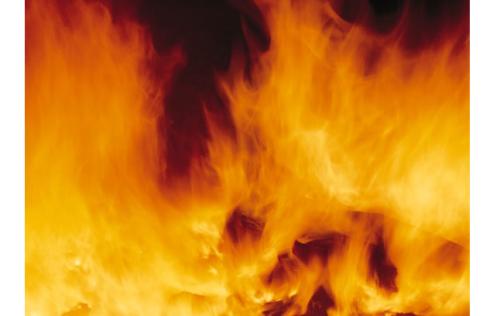Guide: The phenomenon that combustible substances deposited at the tail of the boiler reignite and burn is called secondary combustion. When the boiler undergoes secondary combustion, the economizer and induced draft fan will be burned out, and in severe cases, the tail part of the boiler may be burnt.
The phenomenon that combustible substances deposited at the tail of the boiler reignite and burn is called secondary combustion. When the boiler undergoes secondary combustion, the economizer and induced draft fan will be burned out, and in severe cases, the tail part of the boiler may be burnt.

The combustible substances deposited at the tail of the boiler, such as carbon black, oil, pulverized coal, etc., are mainly brought into the tail of the boiler due to incomplete combustion. Especially during ignition and shutdown, it is most likely to cause incomplete combustion and deposit a large amount of combustible materials at the tail of the boiler. These deposits reduce the heat transfer effect of the heating surface of the tail and increase the exhaust gas temperature. When the exhaust gas temperature rises to a certain value and there is enough oxygen to support combustion, secondary combustion will occur,
Some secondary combustion occurs after a few minutes or a few hours after the furnace is shut down, which is related to the ignition point and heat dissipation conditions of the combustible material. The flue gas flow rate at the tail of the operating boiler is relatively fast, and the heat generated by combustible materials is quickly taken away by the flue gas, which can only be slowly oxidized, and cannot achieve ignition and combustion. After the furnace is shut down, the flue gas in the flue stops flowing, the heat generated by the oxidation of combustible substances is not easily lost, and the temperature will rise. If the furnace door or flue baffle is not closed tightly, and fresh air leaks to support combustion, it will cause secondary combustion after the furnace is shut down.
In order to prevent secondary combustion at the rear of the boiler, the fundamental measure is to prevent the deposition of combustible substances at the rear of the boiler. For this reason, during ignition, if the ignition does not ignite, the supply of fuel (such as coal, oil, gas, etc.) into the furnace must be stopped immediately to prevent combustible materials from being brought into the tail of the boiler. During operation, soot blowing should be strengthened, with proper air distribution, so that the combustion is complete and no black smoke is emitted. After the furnace is shut down, the temperature of the economizer should be monitored. If it suddenly rises by several tens of degrees, it has caused spontaneous combustion, and immediately take extinguishing measures.
In order to eliminate the secondary combustion in time, carbon dioxide fire extinguishers can be used to extinguish the fire, or a steam fire extinguishing pipe can be installed at the heating surface of the boiler tail. The steam fire extinguishing pipes should be evenly arranged, have low resistance to the flue gas, do not affect soot blowing, and be tight and leak-proof, and their exhaust volume should be sufficient to suffocate secondary combustion.




























